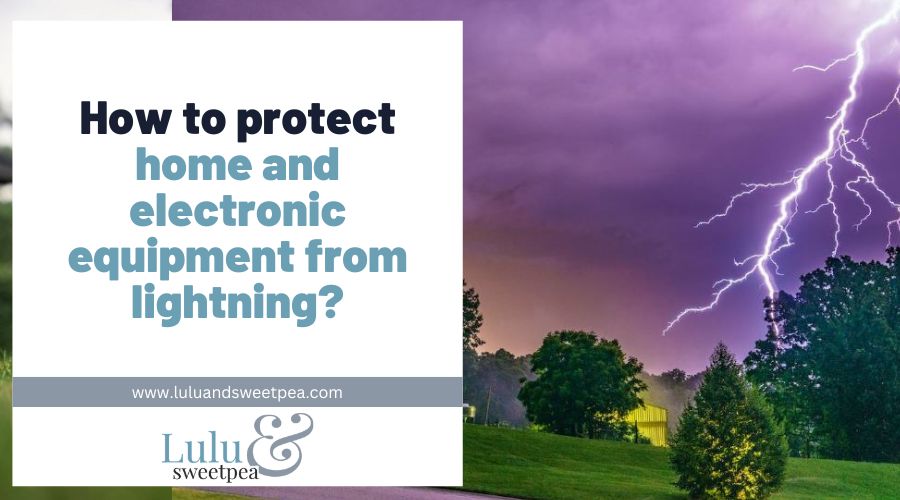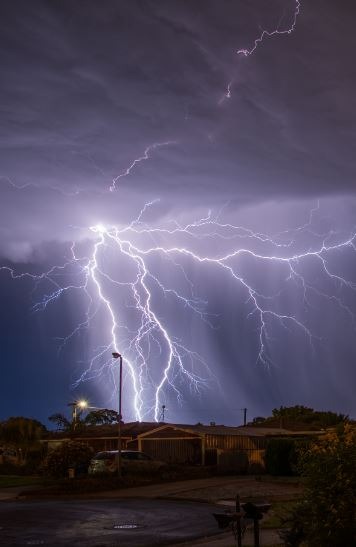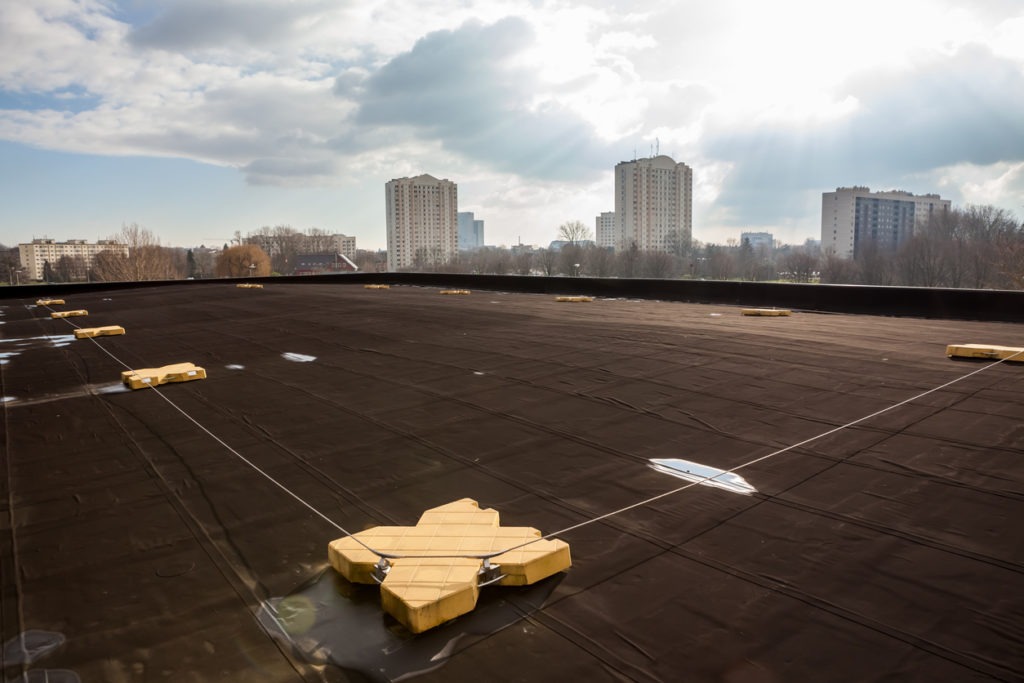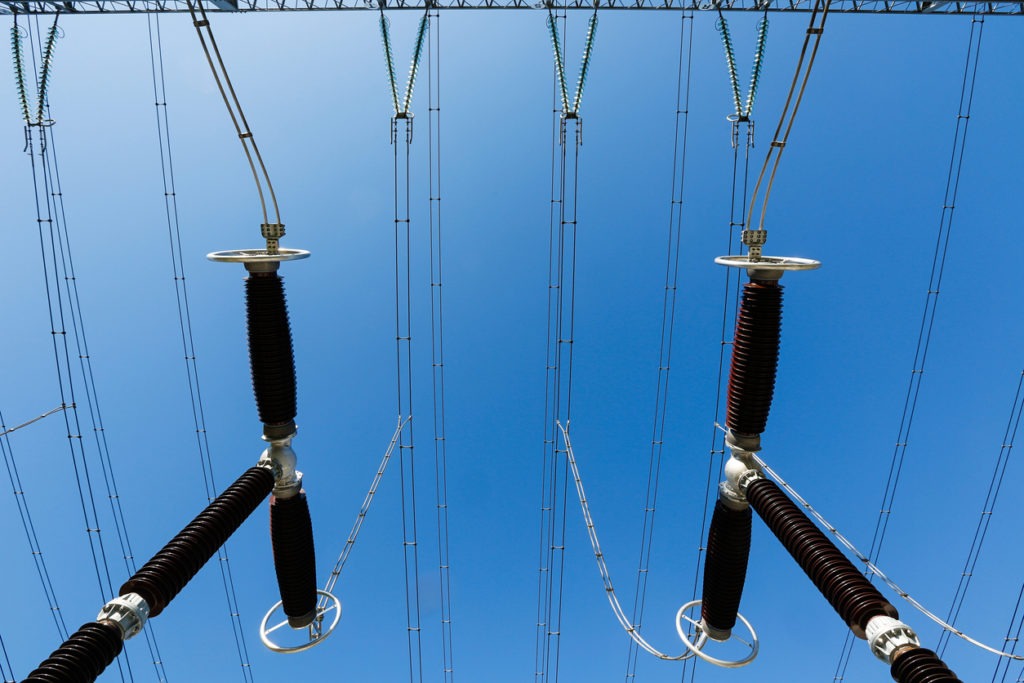Especially if you have young children or animals who are terrified of storms, the commencement of a thunderstorm might cause stress in your household. However, storms also pose the risk that lightning will strike your home, causing property or electronic damage. Most residential wiring supplies electricity at 120 volts. Compare this to a regular lightning strike, which has approximately 300 million volts. A single lightning strike might inflict considerable damage to your television, computer, appliances (e.g., washing machine, refrigerator, and dishwasher), and light fixtures.
Additionally, nearby lightning strikes can enter your home through wires or pipes that extend beyond the property, such as phone, internet, and cable wires. The energy from a nearby lightning strike can move directly from a utility pole to a home’s electrical panel through these communication lines. Follow this straightforward technique to safeguard your devices against lightning, regardless of how it strikes.
Lightning’s Biggest Problem
The significance of lightning protection cannot be overstated. Lightning has the capacity to injure not just humans and structures, but also electrical circuits in a severe manner.
In many instances where lightning has caused electrical items to malfunction, the owner is unaware of the source. The explanation is straightforward: one need not be struck directly by lightning to experience its effects.
In several instances, lightning striking power lines below or above ground can send excess voltage across the grid, damaging electrical circuits at a considerable distance from the strike place. As a result, many people whose electrical systems fail due to voltage surges and spikes induced by lightning strikes may be unaware that meteorology is to fault.
Worse, if these voltage spikes occur frequently, they can lead to the gradual deterioration of electrical systems over time. Upon failure, it may not be immediately apparent that multiple lightning strikes have caused significant damage, especially if the eventual breakdown happens during favorable weather conditions.
Typical Lightning Protection Equipment
The most prevalent lightning protection equipment are lightning rods installed on the roofs of buildings. The purpose of these rods is to limit the possible property damage caused by a direct collision. In these instances, the electrical surge, which can reach tens of thousands or even millions of volts, travels rapidly down the building’s exterior and into the ground. This swiftly eliminates the potentially deadly effects of the voltage surge.
In instances when electrical devices are in use, the usage of lightning rods may not be sufficient to offer adequate lightning protection. This is due to the fact that a high voltage traveling rapidly to the ground can generate a magnetic field strong enough to produce electrical interference.
Thus, even a structure equipped with a lightning rod may still experience electrical failure. This may involve blown fuses, melted wiring, or the corruption of data held on magnetic memory devices, such as the hard drives of many computers.
In situations where protection from voltage surges is crucial, extra protection is recommended, typically in the form of a “lightning suppressor.”
Methods to Prevent Homes from Lightning Damage
1. Utilize a residential lightning protection system
Installing a house lightning protection system is one of the most effective ways for homeowners to safeguard their homes from lightning. The Dallas-Fort Worth, Texas affiliate of NBC, KXAS-TV, quoted studies by Underwater Laboratories indicating that a properly built lightning protection system is around 99 percent successful in preventing damage. Systems for lightning protection may include:
- lightning rods
- primary conductors
- grounds
- bonds
- surge protectors
A lightning protection system, according to the Lightning Protection Institute, is a combination of highly conductive copper and aluminum materials used to offer a low-resistance conduit to securely ground lightning’s harmful charge. The Lightning Protection Institute also observed that installing a lightning protection system may qualify homeowners for a discount on their homeowner’s insurance.
2. Unplug electronic devices and home appliances
In addition to starting structural fires, lightning can also harm your home’s electronics. Lightning can inflict power surge damage if it uses your home’s electrical wiring system as its primary or secondary path. The electrical surge can even harm non-electrical devices. In anticipation of a storm, owners and renters can easily prevent electrical damage by unplugging all electronic gadgets and appliances.
3. Install transient voltage surge suppressors
There will always be instances when you cannot unplug your technological devices, such as during a trip. Installing transient voltage surge protectors is one method for ensuring your electronics are always safe from lightning. Surge protectors are linked to computers and other electronic devices to limit voltage to 1.5 times the regular voltage.
4. Examine Your Homeowners and Renters Insurance Protection
Even if you take every precaution, you must ensure that your homeowner’s insurance and renter’s insurance policies cover lightning damage. Ensure that your insurance policy covers damage to your home and electronic devices.
Preparing Household Electronics for Inclement Weather
Those wishing to prevent losses due to damage to electronic devices can take the following precautions to keep their devices safe:
1. Install Surge Guards
When residents are absent and unable to unplug their electrical devices and appliances, lightning can strike. A point-of-use, plug-in surge protector redirects power spikes to the ground connector. By utilizing surge protectors, people are able to significantly restrict the voltage that reaches their plugged-in gadgets.
2. Install a lightning protection system for the entire house
To safeguard a property from electrical surges, homeowners might request the installation of a service-entrance surge protector by a professional electrician. Typically, this sort of surge protector is installed between the electric meter outside the home and the main electrical service panel or breaker box within the home. A whole-house system can prevent an electrical surge from accessing the home’s internal wiring system, protecting any electrical equipment within.
3. Install Air Terminals
Air terminals, sometimes referred to as conventional lightning rods, are the most frequently installed lightning protection equipment. Multiple little terminals/rods are put across the roofline of the residence. The primary objective of the system is to deliver lightning with a direct path to the ground. Not fond of the appearance of the terminals on your roof? Available are decorative terminals and cosmetic solutions!
4. Implement an ESE System
The Early Streamer Emission system comprises of a single, bigger rod and is an alternative to conventional air terminals. ESEs continuously monitor the surrounding air voltage and release upward streamers (the branch of lightning that ascends from the ground to the cloud) to meet any downward leaders (the branch of lightning that extends from the cloud). Captured charges are deflected away from susceptible spots and directed to the ground. ESE systems are ideal for large buildings and open areas.
5. Utilize grounding systems
In residential constructions, lightning protection grounding systems neutralize the lightning current that passes through the down conductors after being captured by a lightning rod or other sort of air terminal. Additionally, grounding systems can scatter electrical surges resulting from power-switching transients. As with the connections between air terminals, down conductors, and grounding systems, the grounding system’s components must be correctly bonded. Existing conductive equipment must also be connected to the grounding system in order to prevent dangerous voltages in the case of a lightning strike or power-switching transient.
6. Implement Surge Protection
You’ve invested in cutting-edge equipment; now it’s time to safeguard them! Surge protection protects these electronic devices from abrupt voltage spikes. These devices capture and redirect electrical energy generated by nearby lightning strikes. Surge protection devices can work independently of complete physical lightning protection systems; however, this is not generally recommended.
To summarize
Lightning hits year- round. In certain instances, these electrical discharges between storm clouds and the ground can cause significant harm. In addition to buildings, residences, and structures, applies to individuals, equipment, and technologies.
Therefore, it is essential that you know how to preserve your property and equipment to the greatest extent feasible.



